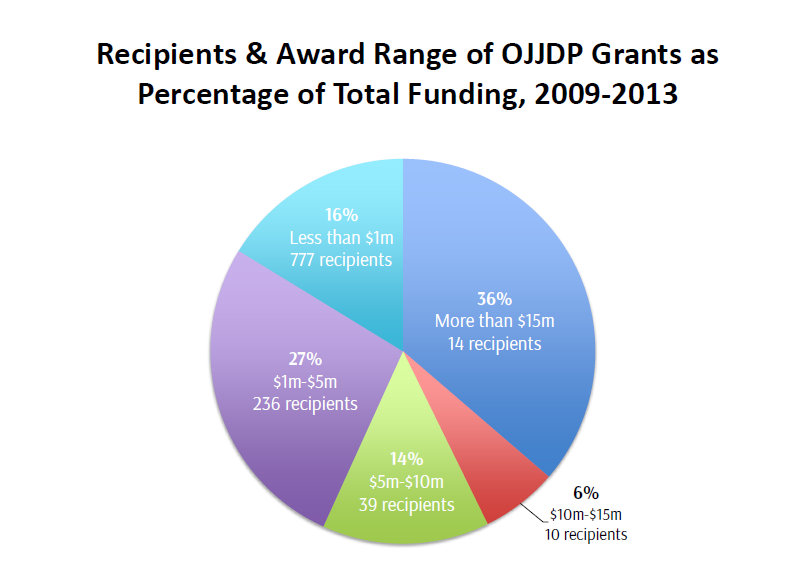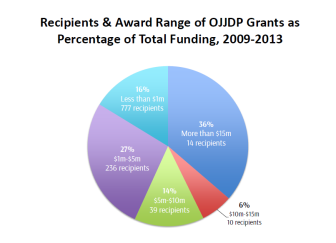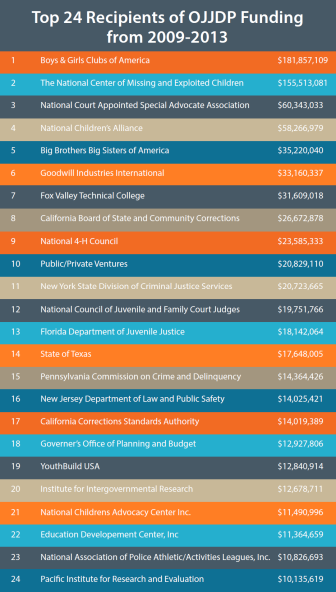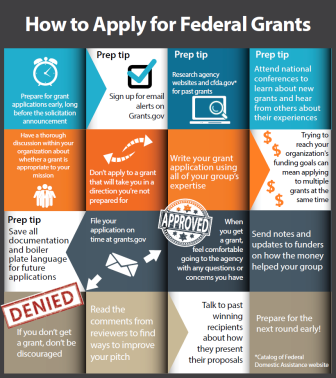Twice in the last four years, the Collaborative for Educational Services in western Massachusetts has sought federal funds from the Office of Juvenile Justice and Delinquency Prevention to study its program that educates youth in custody and helps them find jobs. But despite their best efforts, success has been elusive.
The feedback from those who judged its application highlighted many strengths of the proposal, says Executive Director William Diehl, but ultimately OJJDP questioned the study’s “quasi-experimental” nature. The proposal was indeed experimental, but it was necessary to deal with the inconsistent nature of the juvenile justice system, Diehl says. Unlike a public school with a set beginning and end of the year, their programs run all the time with youth entering for anywhere from six months to two years, he adds.
“We worked with a professor and we did some really good work trying to come up with an experimental design that would take into account these inherent problems and still be scientifically valid,” Diehl says. “They didn’t like what we came up with apparently.”
When comparing the Collaborative’s experience with other organizations that have received millions from the OJJDP over the last five years, the federal grant process can seem inscrutable and arbitrary to those passed over — especially because details are not disclosed about how winning applications are judged.
In response to a request from Youth Today, the OJJDP released the total aggregate amounts given for each program, showing it awarded more than $2 billion in grants between 2009-2013. Of that amount, more than $505 million, or 25 percent, went to formula and block grants to states and territories, while the overwhelming majority, $1.5 billion, went toward mostly-competitive discretionary grants to states, local governments, tribes, nonprofits, universities and private companies.
Using additional publicly available OJJDP grant data on individual awards, Youth Today found that the agency gave at least 2,721 separate grants to at least 1,077 recipients over the last five years. Readers can search, filter, and view these grants using the searchable database below.
(A note about the database: Because some data on specific grants was not made publicly available by OJJDP, the total amount of the grants in this database is about $113 million less than what OJJDP has reported. For example, the OJJDP website recorded giving $88 million in earmarks and $921,000 in recovery funds in 2010, but did not include the specific amounts given to each recipient of these grants.)
Other Youth Today findings include:
-
The total dollar amount of grants awarded dropped by more than half in the last five years due to budget cuts, the end of Recovery Act funding and the current congressional ban on earmarks. In 2013, $271 million in total grants were awarded, reflecting a 55-percent decline from 2009.
-
Among grants awarded over the last five years, the average size was $712,000, while the median, or midpoint of all grants, was $360,000. The average number of grants each recipient received was 2.5, while the median number of grants received was 1.
-
Some 20 percent of discretionary grants, or $282 million, was awarded without competition from 2009-2013. This includes $176 million awarded through earmarks and $106 million given through invited grants after OJJDP solicited applications from specific groups.
-
The top 24 recipients each received more than $10 million over the last five years, with a combined total of $828 million, or 43 percent of all grants. The remaining 1,052 recipients each received less than $10 million during this period.
-
The recipients of the largest amounts of OJJDP grant funding from 2009-2013 were the Boys & Girls Clubs of America, which received $181,857,109; The National Center for Missing and Exploited Children, which received $155,513,081; and the National Court Appointed Special Advocate Association, which received $60,343,033.
-
The state recipients who received the largest amount of grant funding were the California Board of State and Community Corrections, which received $26,672,878; the New York State Division of Criminal Justice Services, which received $20,723,665; and the Florida Department of Juvenile Justice, which received $18,142,064.
-
The recipients that received the lowest amounts of funding in the last five years were Bee Crime Stoppers, Inc., which received $5,000; the City of New Orleans Health Department, which received $20,000 (although the City of New Orleans has received $245,223); and the American Professional Society on the Abuse of Children, which received $25,000.
Grant Know How
Understanding how the federal grant process works can go a long way toward writing a successful grant. At the most basic level, there are two types of government spending: mandatory spending, which includes entitlement programs such as Medicare and Social Security that are not appropriated annually by Congress, and programs funded through discretionary spending, which includes all annual forms of congressional appropriation. Discretionary spending is a budgetary term, and should not to be confused with what many agencies, including OJJDP, label “discretionary grants”, says Marcia Howard, executive director of Federal Funds Information for States.
Another characteristic used to define grants is whether they are categorical. Some discretionary spending is categorical, meaning there are specific conditions and purposes for which they can be awarded, and some are not and can be used for general purposes, such as block grants.
Discretionary spending at the agency level includes formula and block grants, project grants and earmarks.
Formula grants are awarded without competition to states and territories, and as the name implies, are distributed according to a set formula based on various factors such as population, census data, violent crimes reported and the annual congressional appropriation, according to the OJJDP grants website. Some formula grants require state applicants to apply to ensure they meet certain basic requirements set by Congress before funds are distributed. Once formula grants are transferred to a designated state agency, that agency can then award subgrants to organizations in their state.
Block grants are a type of formula grant that can be used for a wider array of purposes.
Project grants are competitive grants for specific purposes and are what OJJDP refers to as “discretionary grants” because the funds are awarded at the discretion of the agency. When funding becomes available, project grants are announced through a public solicitation where applicants have a set period of time to apply. These types of grants are typically for demonstration, research and training and technical assistance, according to OJJDP.
Each project grant solicitation has unique criteria for eligible applicants that can include states, tribes, cities, police departments, nonprofits, universities and businesses. Once submitted, applications are evaluated and scored by agency staff and independent peer reviewers and funding is awarded based on their merits. Often, the highest-ranking applicants receive the grants. However, the OJJDP Administrator or the Assistant Attorney General for the Office of Justice Programs are allowed final determination of awards.
Another type of project grant are cooperative agreements where the agency awards grants to recipients to accomplish a purpose that has been authorized by a federal statute and will require substantial involvement with the government, according to the OJJDP grants website. Recent cooperative agreement recipients include the Court Appointed Special Advocates for training and technical assistance, and the National Council of Juvenile and Family Court Judges for child abuse training to judicial and court personnel.
Invited awards are project grants that are not awarded competitively. In an invited award, the OJJDP solicits applications from specific organizations for funding. One recipient of an invited award is the National Center for Missing & Exploited Children, a nonprofit that has been authorized by Congress to perform specific tasks, according to the OJJDP. But not all invited awards have congressional authorization. The OJJDP grant data analyzed by Youth Today found 182 recipients of invited awards from 2009-2013, including cities, state offices, nonprofits and universities.
Earmarks are also project grants that are not given on a competitive basis. Also known as congressionally directed awards, earmarks are funds that have been allocated and approved by Congress to go to specific recipients.
BEST PRACTICES
Those who have received winning grants say it’s important to start thinking early and prepare grant material in advance of a solicitation announcement.
Megan Robinson, director of program investments and partnerships at Communities in Schools, a nonprofit network of professionals who work in public schools, says she receives email alerts on Grants.gov, researches grants on the Catalog of Federal Domestic Assistance website and searches agency websites such as OJJDP’s solicitations from prior years. She also attends national conferences to learn about new grants and hear from others about their experiences. Her work has paid off. Communities in Schools won multi-state mentoring grants in 2011 and 2013 totaling about $4.5 million.
“If your first inclination is to apply when a grant is posted, it will make for a really stressful process,” Robinson says. “Do your homework before an opportunity is announced.”
After identifying potential grants, make a point to have a conversation within your organization about whether the grant is appropriate and in accordance with your mission, she adds.
“You don’t want to apply and have the grant take you in a different direction that you’re not prepared for,” Robinson says.
It helps that the mission of the Boys & Girls Clubs of America, which has received the largest amount of grant funding from OJJDP in the last five years, is so close to the mission of OJJDP, says Perry Cooper, the organization’s national vice president for federal grants.
The size and national reach of the Boys & Girls Clubs also means that it can quickly serve large metropolitan areas where youth are often exposed to a high number of risk factors associated with juvenile delinquency, Cooper adds. The grants they’ve won in the last five years have been for OJJDP’s mentoring programs, including the national mentoring program, one-on-one and group mentoring, and mentoring to tribal youth.
“There are not a lot of national organizations that have the scope and programmatic influences to deliver those grants, so that narrows the field down quite a bit,” Cooper says. “We mentor 30,000 kids in a given grant year. We’ve produced significant outcomes in a broad number of communities.”
Once you’ve started writing any grant, remember to save your boilerplate language for future applications to other funding sources, says Robinson.
Keep in mind that trying to meet your organization’s funding needs can mean you’re constantly writing proposals, adds Michael Piraino, the CEO of the National Court Appointed Special Advocate Association, which aids 234,000 children in 49 states through court-appointed volunteers who advocate for abused and neglected children. Their OJJDP grants in the last five years include cooperative agreements and a national mentoring grant.
Piraino says solicitations for grants for which CASA applies typically open in June and close in July, and decisions are made by the end of September. The funding often doesn’t come until the following calendar year, he adds.
“What this all means is that you’re often applying for a new grant while you have various ones that are in various points of the process,” he says.
Once you get a grant, don’t be a stranger to OJJDP, Robinson adds. You should feel comfortable asking the agency about any questions or concerns you have. And share the good stuff too, she says.
“If there’s something unique happening with our affiliates, such as a successful event or a success story that was a result of OJJDP funding, I like to send that note on to keep them in the loop,” she says.
Even with the best stories and guidance, losses are inevitable, says Cooper at the Boys & Girls Clubs. When that happens, be sure to keep the reviews of your proposals on file to help improve your pitch, he adds.
“It does happen that we don’t get a grant and that can be frustrating,” Cooper says. “You can spend hundreds of hours putting an application together that you feel good about, and when you don’t get it, it can be very deflating. But you just have to turn the page and know that you can’t get them all.”
William Diehl at the Collaborative for Educational Services says he’s not deterred.
“We will continue to apply. We try to go after everything that makes sense for our work,” Diehl says. “It’s a little discouraging, but it won’t stop us from continuing to improve our grants and applications.”
Financial supporters of Youth Today may be quoted or mentioned in our stories. They may also be the subjects of our stories.

































